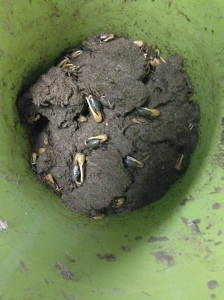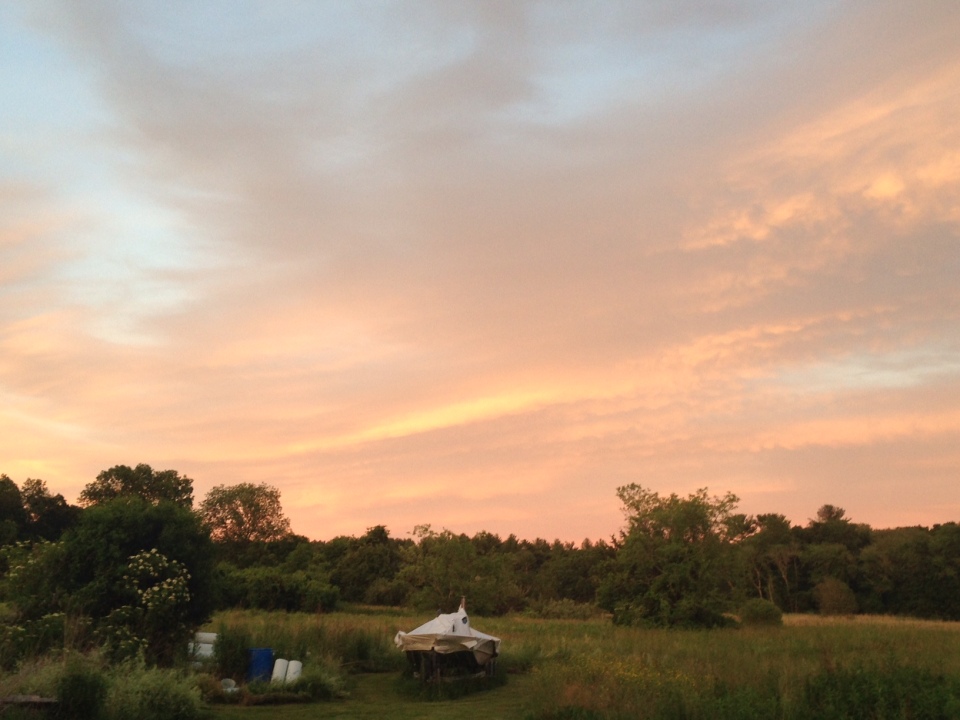A study recently published in Nature Communications from the TIDE Project reveals that eutrophication can cause some marsh microbes to go dormant, affecting the overall health of the ecosystem. Below is a copy of the original press release put out by the National Science Foundation, a major funder of the TIDE Project.
***
Could the future of a salt marsh be hidden in the health of its microbes? Scientists say yes.
Salt marshes play key roles in reducing the effects of urbanization and climate change. Marshes absorb carbon dioxide from the atmosphere, and their microbes break down carbon.
That’s why researchers are working to find out how these vital ecosystems tick.
Jennifer Bowen of Northeastern University and colleagues have studied microbes in the sediments of salt marshes in the National Science Foundation (NSF) Plum Island Ecosystems Long-Term Ecological Research (LTER) site in northeastern Massachusetts.
They’re working to discover how the marsh — and the microbes in it — change over time when outside influences, such as nitrogen, are introduced to the ecosystem.
“A lot of the ecological services salt marshes provide are facilitated by microbes,” Bowen said. “They’re involved in the carbon cycle and the nitrogen cycle, and they remove nutrient pollution through their metabolic processes.”
Dormant microbes
In a new paper published in the journal Nature Communications, Bowen and her Northeastern colleague Patrick Kearns, who is first author of the paper, along with researchers at the Marine Biological Laboratory and Woods Hole Oceanographic Institution, set out to discover what would happen to microbes in salt marshes if specific nutrients were added to the environment — through urbanization and climate change, for example.
Adding nutrients like nitrogen produced no change in the types of bacteria present in the salt marsh — at least, temporarily. But over time, a large number of the microbes became dormant.
“It’s kind of like a bear going into hibernation,” Bowen said. “These dormant bacteria are in a low metabolic state. They just bide their time until environmental conditions return that are suitable for them.”
When the microbes go dormant, they don’t contribute to the critical ecosystem services that make salt marshes important.
Human-salt marsh interactions
“This study shows that human activities are affecting bacteria essential to salt marshes in ways we never suspected,” said Matt Kane, program director in the NSF Division of Environmental Biology, which co-funded the research with NSF’s Division of Ocean Sciences. “Coastal salt marshes provide many benefits — supporting diverse wildlife, helping to reduce pollution, and protecting us from flooding.”
What happens to salt marshes and their bacteria, Kane explained, ripples into human lives.
The study’s results help explain why salt marshes contain so much microbial diversity. One group of microbes is specialized for a specific set of conditions, while another is linked with others. As the environment changes, different bacteria take advantage of the conditions that are most suitable to them.
“These investigators have made an important discovery about the resilience of microbial communities in salt marsh ecosystems,” said David Garrison, program officer in NSF’s Ocean Sciences Division.
A salt marsh, the researchers say, is a constant balancing act.
“If we see an increase in the abundance of bacteria that are able to decompose the marsh, we also see an increase in bacteria that can help fix carbon,” Bowen said. “If a marsh is failing, there is no way to restore the microbes. But what can be created is an environment that will help these microbes thrive.”
To save the marshes, she said, save their microbes.
***
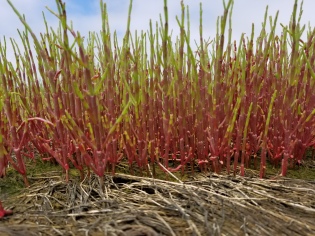 I’ve lived my whole life in Massachusetts and hadn’t stepped foot into a saltmarsh until I was 20 years old; now I’m a second year field tech for the Byrnes lab studying how salt marshes are changing over time. I consider myself very acquainted with the marsh, however cruel she might be sometimes, but I am in awe of the fact that time feels different in the marsh. When I return every morning, it seems the same. The grass is still growing, the creek is still running, the birds are still chirping, but most noticeably, the bugs are still biting. A seal skeleton I found fresh in 2018 is still perfectly aligned when I came back in 2019. Very constant. It’s as if the marsh simply doesn’t change.
I’ve lived my whole life in Massachusetts and hadn’t stepped foot into a saltmarsh until I was 20 years old; now I’m a second year field tech for the Byrnes lab studying how salt marshes are changing over time. I consider myself very acquainted with the marsh, however cruel she might be sometimes, but I am in awe of the fact that time feels different in the marsh. When I return every morning, it seems the same. The grass is still growing, the creek is still running, the birds are still chirping, but most noticeably, the bugs are still biting. A seal skeleton I found fresh in 2018 is still perfectly aligned when I came back in 2019. Very constant. It’s as if the marsh simply doesn’t change.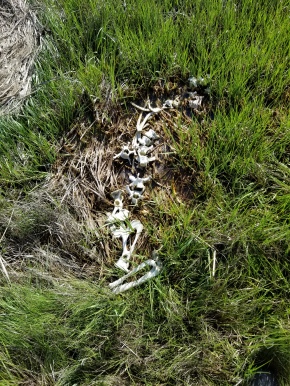 they erode more marsh. The species of grass are changing, signifying a slightly lower elevation. Even all the first holes you fell into are now growing bigger, as if they’re chasing you. This, unfortunately, is called marsh degradation and it happens at a rate that can oftentimes be difficult to detect.
they erode more marsh. The species of grass are changing, signifying a slightly lower elevation. Even all the first holes you fell into are now growing bigger, as if they’re chasing you. This, unfortunately, is called marsh degradation and it happens at a rate that can oftentimes be difficult to detect.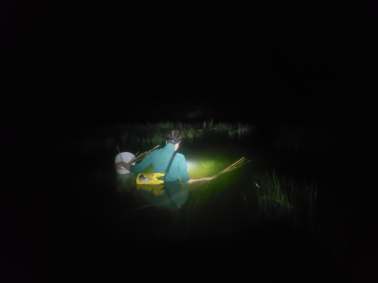
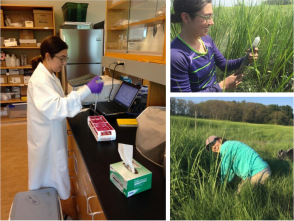
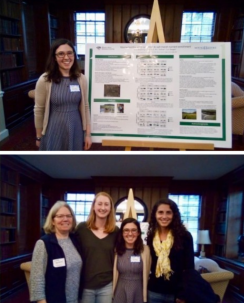
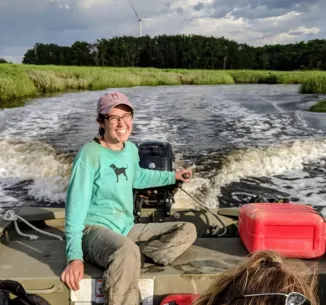
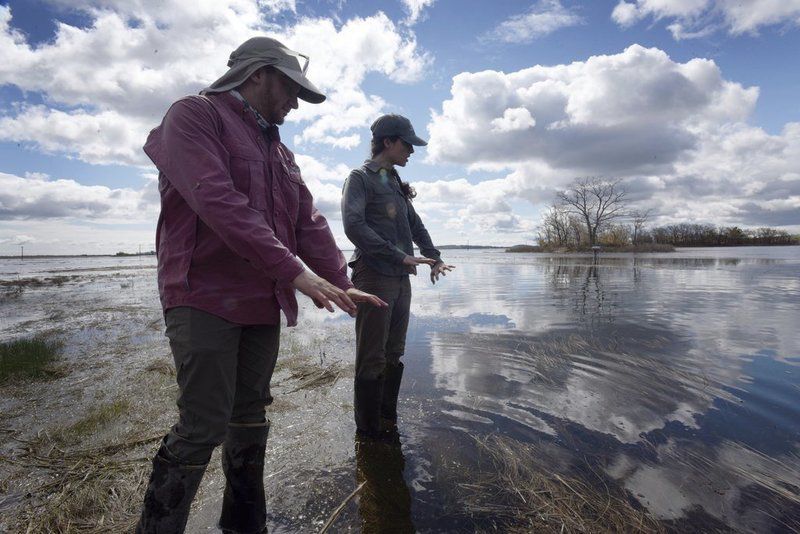
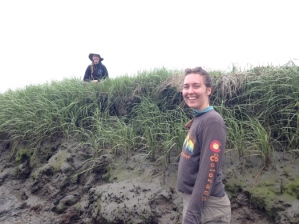
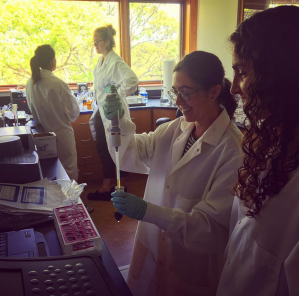
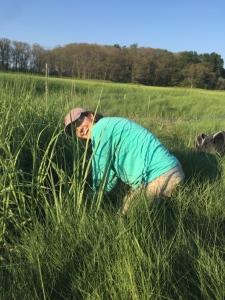
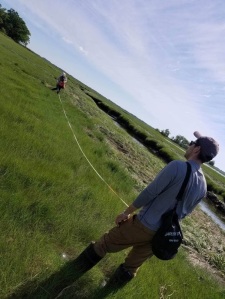 Imagine for a moment that you are a crab larva. Floating in the middle of an urban estuary (say, the Port of Rotterdam in the Netherlands), you just hatched, and are one of millions of little baby crabs hoping to survive long enough to make it to adulthood. Then suddenly, inexplicably, you are sucked up into a strong current that you don’t understand. The sun disappears, and you are surrounded by thousands of your brothers and sisters, but also many other larvae that you don’t recognize. Time seems to stand still, and you do what you can to make the best of a bad situation. Then suddenly, the same current again pulls you, but now in the opposite direction, back the way you came. Hooray, you are free! But wait, this new water feels different; this is not at all what you remembered of your home. By this time, you are a little older, a little larger, and a little bit more aware of your surroundings. You recognize you must be in a different place entirely, but you again make the best of a bad situation, and settle along the marshy shores of your new locale (not knowing you just entered Boston Harbor). You grow into an adult, and you discover to your relief that your home is not so bad after all. Predators don’t recognize you as prey, and parasites don’t infect you. So you yourself then reproduce, your offspring survive in massive numbers, and your species excels in this new home; a truly crabby paradise.
Imagine for a moment that you are a crab larva. Floating in the middle of an urban estuary (say, the Port of Rotterdam in the Netherlands), you just hatched, and are one of millions of little baby crabs hoping to survive long enough to make it to adulthood. Then suddenly, inexplicably, you are sucked up into a strong current that you don’t understand. The sun disappears, and you are surrounded by thousands of your brothers and sisters, but also many other larvae that you don’t recognize. Time seems to stand still, and you do what you can to make the best of a bad situation. Then suddenly, the same current again pulls you, but now in the opposite direction, back the way you came. Hooray, you are free! But wait, this new water feels different; this is not at all what you remembered of your home. By this time, you are a little older, a little larger, and a little bit more aware of your surroundings. You recognize you must be in a different place entirely, but you again make the best of a bad situation, and settle along the marshy shores of your new locale (not knowing you just entered Boston Harbor). You grow into an adult, and you discover to your relief that your home is not so bad after all. Predators don’t recognize you as prey, and parasites don’t infect you. So you yourself then reproduce, your offspring survive in massive numbers, and your species excels in this new home; a truly crabby paradise.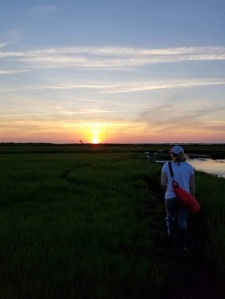 Congratulations! You just experienced what it was like to be an invasive (i.e. non-native, non-indigenous, etc.) species transported from the Europe to the Eastern United States by ballast water from a commercial vessel. In order to maintain buoyancy and pitch while at sea, ships take on various kinds of ballast including rocks and water. Rock ballast was more commonly used in early shipping in New England in the 17th, 18th, and 19th centuries. In fact, the first arrival of the European green crab Carcinus maenas to New England was through British and American merchants unloading rocks (which also contained crabs) at ports along the Gulf of Maine. A second wave of green crabs was introduced to the eastern seaboard more recently in the 1980s through water ballast (much like your own crab experience). Although seemingly beneficial for the crab, bioinvasions rapidly became a problem by the mid to late 1980s not only for native organisms, but also for people. In 1988, the zebra mussel was introduced accidentally to the Great Lakes in North America from Bulgaria in Europe. A fouling species of mussel that grows on practically any surface it touches, intake pipes from Lake Michigan to Chicago were clogged for weeks until utility companies were able to replace the critical infrastructure. The result: zebra mussels cost taxpayers millions to remediate the problem. Therefore, it is incredibly important to continue to understand global effects of bioinvasions on a variety of ecosystems including the Plum Island Estuary, and how to prevent their spread; no matter how much those crabs need a change of scenery!
Congratulations! You just experienced what it was like to be an invasive (i.e. non-native, non-indigenous, etc.) species transported from the Europe to the Eastern United States by ballast water from a commercial vessel. In order to maintain buoyancy and pitch while at sea, ships take on various kinds of ballast including rocks and water. Rock ballast was more commonly used in early shipping in New England in the 17th, 18th, and 19th centuries. In fact, the first arrival of the European green crab Carcinus maenas to New England was through British and American merchants unloading rocks (which also contained crabs) at ports along the Gulf of Maine. A second wave of green crabs was introduced to the eastern seaboard more recently in the 1980s through water ballast (much like your own crab experience). Although seemingly beneficial for the crab, bioinvasions rapidly became a problem by the mid to late 1980s not only for native organisms, but also for people. In 1988, the zebra mussel was introduced accidentally to the Great Lakes in North America from Bulgaria in Europe. A fouling species of mussel that grows on practically any surface it touches, intake pipes from Lake Michigan to Chicago were clogged for weeks until utility companies were able to replace the critical infrastructure. The result: zebra mussels cost taxpayers millions to remediate the problem. Therefore, it is incredibly important to continue to understand global effects of bioinvasions on a variety of ecosystems including the Plum Island Estuary, and how to prevent their spread; no matter how much those crabs need a change of scenery!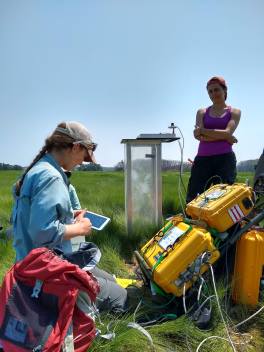
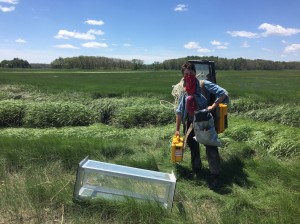
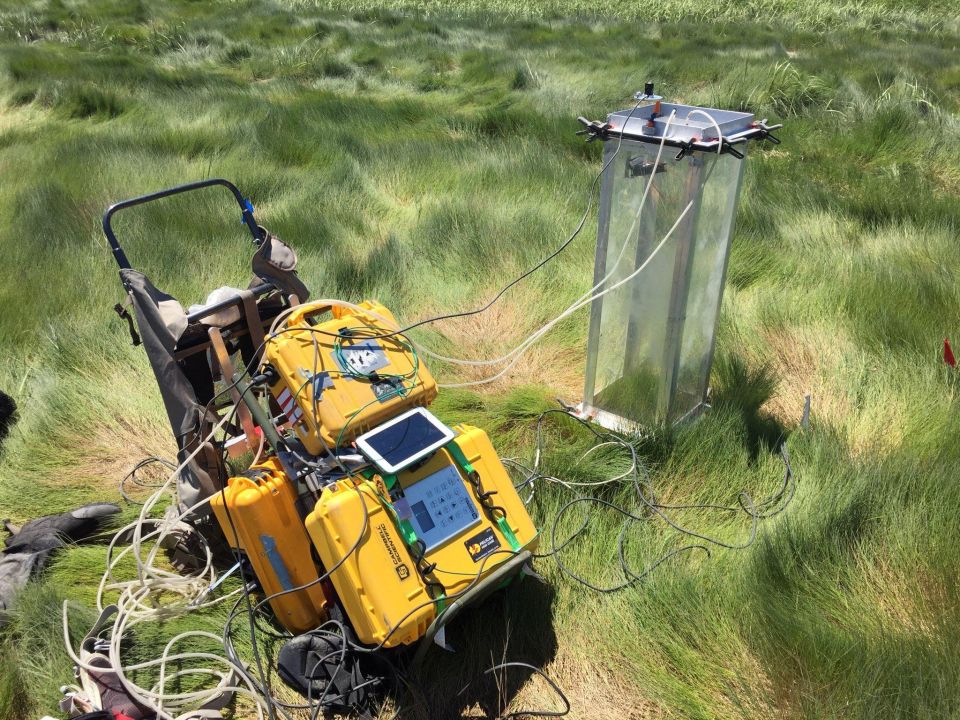
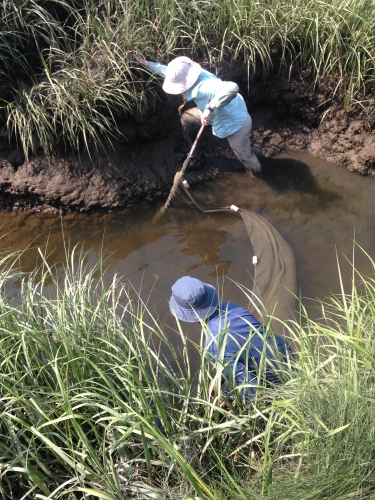
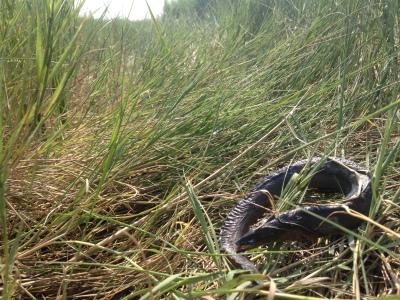 the sloughing and disintegration of the low marsh area of the creeks, which normally act as a ramp for these mighty minnows to make their daring climb. How does the loss of that ramp affect the mummichog’s ability to bridge the two ecosystems, and what does a change in the strength of that link mean for the creek’s other residents? How does the ecosystem respond to this decoupling of the creek and high marsh? These are the questions I’m hoping to answer this summer. As we head out to West Creek with our trusty seine net to collect fish, shrimp, and other marine critters for our analyses, we come across a dead American eel on the path, stranded as the tide receded and desiccated by the strong summer sun. Clearly, the high marsh bounty is worth risking everything for, and I hope to understand how that link, and its loss, drives the function and long-term stability of these “peaceful” ecosystems.
the sloughing and disintegration of the low marsh area of the creeks, which normally act as a ramp for these mighty minnows to make their daring climb. How does the loss of that ramp affect the mummichog’s ability to bridge the two ecosystems, and what does a change in the strength of that link mean for the creek’s other residents? How does the ecosystem respond to this decoupling of the creek and high marsh? These are the questions I’m hoping to answer this summer. As we head out to West Creek with our trusty seine net to collect fish, shrimp, and other marine critters for our analyses, we come across a dead American eel on the path, stranded as the tide receded and desiccated by the strong summer sun. Clearly, the high marsh bounty is worth risking everything for, and I hope to understand how that link, and its loss, drives the function and long-term stability of these “peaceful” ecosystems.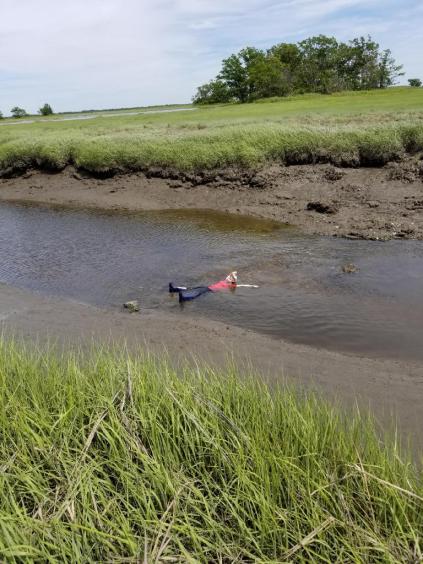 Richard Wong, and I, Byrnes lab undergraduate field tech. We gather our gear; our scientific instruments, our boots and buckets. We set out for a glorious day of experimental set up in the salt marsh. I am so excited to be here as this is my first time working in the field. This is the reason I went to college for Biology, to have a career in which I am spending copious amounts of time in nature.
Richard Wong, and I, Byrnes lab undergraduate field tech. We gather our gear; our scientific instruments, our boots and buckets. We set out for a glorious day of experimental set up in the salt marsh. I am so excited to be here as this is my first time working in the field. This is the reason I went to college for Biology, to have a career in which I am spending copious amounts of time in nature.